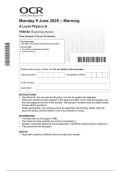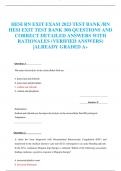Table of content
CHAPTER 1: ORIGIN AND ROLE OF BANKS ....................................................................................... 3
WHAT IS A BANK? ............................................................................................................................... 3
WHY FINANCIAL INTERMEDIATION IS NEEDED AND HOW IT CAN BE ORGANIZED ................................................. 3
BANKS TRANSFORM FINANCIAL FLOWS ..................................................................................................... 6
BANKS AND INFORMATION ECONOMICS ................................................................................................... 6
WHY DO BANKS EXIST? ......................................................................................................................... 7
BANK BALANCE SHEET .......................................................................................................................... 8
PRODUCTS AND SERVICES: FROM CORE TO BROAD ...................................................................................... 9
TYPICAL ORGANIZATION OF A BANK ......................................................................................................... 9
DISTRIBUTION OF BANKS ....................................................................................................................... 9
TYPES OF BANKS.................................................................................................................................. 9
CHAPTER 2: ORIGIN AND CONSEQUENCES OF THE CRISIS OF 2007 ................................................ 10
THE ENVIRONMENT BEFORE 1990......................................................................................................... 10
THE ENVIRONMENT IN 1990-2007. ...................................................................................................... 12
WEAKNESSES OF THE FINANCIAL SYSTEM ................................................................................................ 12
THE CRISIS SINCE 2007 ....................................................................................................................... 13
THE WORLD AFTER THE CRISIS .............................................................................................................. 13
CHAPTER 3: THE NEW REGULATORY FRAMEWORK FOR BANKS ..................................................... 14
THE BUILDING BLOCKS OF FINANCIAL REGULATION/SUPERVISION ................................................................. 14
1. MICRO-PRUDENTIAL SUPERVISION ........................................................................................................ 14
2. MARKET CONDUCT............................................................................................................................. 18
3. LENDER OF LAST RESORT ..................................................................................................................... 18
4. DEPOSIT GUARANTEE SCHEME .............................................................................................................. 18
5. MACRO PRUDENTIAL SUPERVISION (GLOBAL ACCORD, BUT ON NATIONAL LEVEL) ........................................... 18
6. CRISIS MANAGEMENT ......................................................................................................................... 19
7. OTHER IMPORTANT ASPECTS ................................................................................................................ 20
CHAPTER 4: FUNDAMENTALS OF BANK MANAGEMENT ................................................................ 20
BANKS VERSUS OTHER COMPANIES........................................................................................................ 20
BANKS’ BALANCE SHEET AND INCOME STRUCTURE .................................................................................... 21
BANKING RISK TYPES AND MANAGEMENT ............................................................................................... 22
1. CREDIT RISK ...................................................................................................................................... 22
2. LIQUIDITY RISK................................................................................................................................... 22
, GLOBAL BANKING
3. INTEREST RATE RISK ............................................................................................................................ 23
4. CURRENCY RISK ................................................................................................................................. 25
5. OPERATIONAL RISK ............................................................................................................................. 25
6. LEVERAGE/SOLVENCY RISK ................................................................................................................... 25
7. RATING RISK ..................................................................................................................................... 25
RISK VERSUS PROFITABILITY ................................................................................................................. 26
CAMELS ........................................................................................................................................ 26
CHAPTER 5: FUNDAMENTALS OF INTERNATIONAL BANKING......................................................... 27
THE NEED FOR AN INTERNATIONAL APPROACH OF THE FINANCIAL SYSTEM ...................................................... 27
EUROPEAN FINANCIAL INTEGRATION...................................................................................................... 28
WHY BANKS BECOME INTERNATIONAL ................................................................................................... 31
THE INTERNATIONAL REGULATORY FRAMEWORK ...................................................................................... 31
IS THE GLOBALIZATION OF THE FINANCIAL SYSTEM DANGEROUS?.................................................................. 31
INTERNATIONALIZATION AND THE DIGITALIZATION OF THE FINANCIAL SYSTEM ................................................. 31
THE BANKING INDUSTRY TODAY ............................................................................................................ 32
GUEST LECTURE: MASTERCARD ..................................................................................................... 32
PAYMENTS....................................................................................................................................... 32
REGULATORY UPDATE ........................................................................................................................ 33
AUTHENTICATION – DIGITAL SECURITY ROADMAP .................................................................................... 34
BIOMETRICS ..................................................................................................................................... 35
GDPR ............................................................................................................................................ 35
GUEST LECTURE: INVESTMENT BANKING ...................................................................................... 36
COMMERCIAL BANKING VS. INVESTMENT BANKING ................................................................................... 36
A TALE OF TWO CITIES ........................................................................................................................ 40
THE PLAYERS IN 2006, ON THE EVE ON THE CURRENT CRISIS........................................................................ 40
2007-2019 CRISIS AND POST CRISIS ...................................................................................................... 40
THE PLAYERS IN 2019 ........................................................................................................................ 42
CONCLUSION .................................................................................................................................... 43
GUEST LECTURE: INVESTMENT MANAGEMENT ............................................................................. 43
STATE OF THE INVESTMENT MANAGEMENT INDUSTRY: A HELICOPTER VIEW................................................... 43
THE LIFE OF AN INVESTMENT MANAGER SINCE 1980 ................................................................................. 46
CHALLENGES AND OPPORTUNITIES ........................................................................................................ 48
WINNING STRATEGIES ........................................................................................................................ 51
A FEW THOUGHTS ............................................................................................................................. 53
EXAM QUESTIONS......................................................................................................................... 54
KIM NGUYEN 2
, GLOBAL BANKING
Chapter 1: Origin and role of banks
Big difference between a real economy and financial economy.
Real economy Financial economy
– Key element: GDP = sum of all – Services that banks offer = part of
products and services, including what financial economy
governments do – Hard/impossible to forecast (see
– Bank as an institution = part of the stock market or indexes)
real economy – Key word: confidence (because a
– Easy to forecast (see GDP) financial contract is about confidence)
– Is stable (because based on human
needs)
What is a bank?
No generally accepted definition, and dynamic concept (see now with technology). According
to the EU law: “credit institution” = an undertaking that has a business to take deposits or
other repayable funds from the public and to give loans with that money for their own account
and in their own name. => Investment bank ≠ bank! (See Goldman Sachs, JP Morgan)
Narrow banking because each time we have a financial crisis, politicians say that banks are
doing all kinds of things that are not in line with the definition according to the law.
Why financial intermediation is needed and how it can be organized
Crisis: first financial crisis, then economic crisis. When trust in future is lost, financial economy
will collapse first.
– POLITICAL ERROR: “because a financial crisis is a predecessor of a real crisis, let’s put
the financial system in a very narrow jacket” => making it even worse!
Mechanism in the free market = price
Why is financial intermediation needed? The need to transform savings into loans.
Saving = black hole in the real economy because production > spending. But there are also
operators that have no money, but would like to spend money. => SOLUTION: financial system
which is the bridge between the + and the –
Economic consequences of savings
The saving paradox Financial
system
Lending/borrowing: a financial contract
Risk versus return
On the + side, you have the savers. They give their money to the – side, the people who would
like to spend money (loans, equity, …). But will they see their money back? => huge risk.
KIM NGUYEN 3
, GLOBAL BANKING
How can financial intermediation be organized? Through banks. Banks are backed by the
political system, so people don’t need to worry about the promise of getting their money back.
So, the key competence of a bank is risk management.
Commercial
Bank take the risks
bank
Confidence in banks is essential
The bank as a black box
The importance of stability
The need for regulation? An eternal debate
After the big crisis in 1929, the first regulations on banks appeared. Government give license
to a bank and control it to see if the banks are not taking too much risk. The key for a bank to
play the game of giving loans with the money of the deposit holders and be able to give back
the money to the deposit holders, is PRICE.
PRICE => DIVERSIFICATION => BASEL REQUIREMENTS => GOVERNMENT INTERVENTION
Price: takes into account the probability of default/loss
Diversification: the law of large numbers
Buffer: possibility of losing more than expected
Government: when all other actions fail
You have the probability that in certain years the number of losses is bigger than you had
expected. Therefore, the bank needs buffers. Two types of buffers (costly for the bank).
1. Equity: The bank needs equity (shareholders) that put their Asset Liabilities
money in the bank. The shareholders are going to pay when
Loans Deposits
the loss is bigger than expected. The deposit holder is thus
protected by the shareholder. Shareholders are in the fire line;
thus they will require high remuneration. Liquidity Equity
2. Liquidity: People bring deposits to banks for the ST, but they
will withdraw it immediately when they need it. The loans that banks give, are in the
LT. (ST doesn’t make sense) Here confidence plays a very important role. Legally, all
the deposits could go away. As soon as the deposit holders lose confidence, they could
withdraw all their money and the banks will not be able to pay it all back. => Basel
regulations: the bank needs to keep liquidity, in case the deposit holders start to
withdraw all their money.
KIM NGUYEN 4
, GLOBAL BANKING
How can financial intermediation be organized? Through markets. In the market, you invite
all those who want to get money to write down their contract how much they want to pay as
an interest rate and when they will pay the money back. They go to the market and ask to the
surpluses who wants to buy their contract. The + have to decide to whom they are going to
give confidence.
Risk is taken by investor
Market
Focus on transparency and market conduct
Specialized intermediaries
Volatility is natural consequence Private banking Investment banking
Asset management
Brokerage
Bank and market: two different cultures.
1. What’s the difference between bank and market?
BANK MARKET
Putting money on the bank = saving Putting money in the market = investing
Borrowing Issuing
Risks taken by the bank Risks taken by the investor
The “north” The “south”
Regulation to avoid accidents Regulation to be organized in an honest way
Bank supervisor in Europe: ECB (European Market supervisor in Belgium: FSMA
Central Bank) (Financial Sevices and Markets Authority)
Bank supervisor in U.S.: Fed (Federal Market supervisor in U.S.: SEC (Securities
Reserve) and Exchange Commission)
Care about lifetime relationships Care about opportunities
Stability Volatility (because that’s when you make
money)
Black box (because the bank is not explaining Transparency (see prospectus)
what it does with your money)
Salary Bonus
Trust Efficiency
KIM NGUYEN 5










